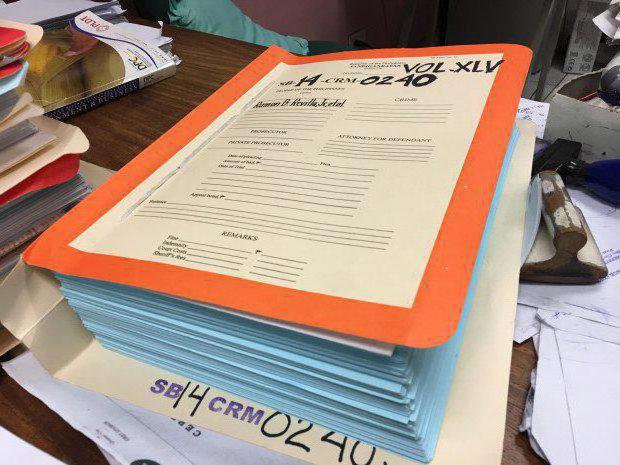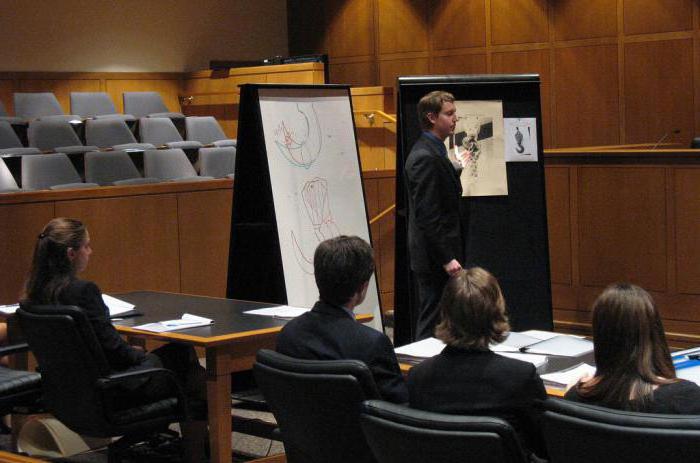Classification of evidence in the civil process helps to clarify their features, see the prospects for resolving the case, possible ways to protect the rights of the party.
Concept of evidence
The concept and classification of evidence in civil proceedings is a topic that most theoreticians occupy. Practicing lawyers in their activities little affect it.

The parties to the process (it doesn’t matter who they are talking about) base their claims and objections on the facts they believe are available. If the court found the facts unproven, the case was lost.
Information about facts relevant to the dispute is called, according to the law, evidence. They serve as sources of information for the court.
The law describes an exhaustive list of possible evidence and requirements for it.
In the literature, the term “classification of judicial evidence in civil proceedings” is used. What is its significance? The category of judicial evidence includes information that may affect the course of the trial. They must also comply with the law. Their mismatch entails a number of negative consequences for the providing party.
Judicial Evidence
A lot is said about the structure of classification of evidence in the civil process, theories are constantly put forward, but the object for study does not change over time. What is included in the list of judicial evidence:
- explanations of the participants in the process;
- testimony of witnesses;
- written and material evidence;
- audio and video recordings;
- expert opinions.
The difference between the explanations and testimonies is that the former come from the side of the case, and neither she nor her representative are responsible for lying or refusing to answer questions from the court or other participants in the process. Because of this, judges tend to distrust them.

Witness - an outsider who does not take part in the process, involved by one of the parties. For a lie or refusal to speak a witness is punished according to the Criminal Code.
Audio and video are rarely used. Mandatory dating of information, other details confirming the timeliness and authenticity of the survey.
Expert opinions are the central source of information on the circumstances of the case. Despite the equality of evidence among themselves, the conclusions of experts in judicial practice are of greater importance, which is not entirely correct.
The expert is also responsible for the refusal to give an opinion and for a false conclusion if a lie or distortion was consciously committed.
Classification criteria
The grounds for the classification of evidence in a civil proceeding are based on different criteria. They are divided:
- on personal and material;
- direct and indirect;
- on the original and derivatives.
The listed criteria are based on scientific research. There are also criteria taken from the law.

The division is made into permissible and not permissible, another criterion is relevance.
Personal and material
Sources of personal evidence are individuals, such as a witness who testifies or an expert who gives an opinion. The information received from them is clothed in various forms. The witness tells in his own words what he saw or heard.
The expert opinion is given in writing, but it is also based on a subjective assessment of a person.
Material evidence is considered more reliable sources, because the information reflected in them is not distorted depending on the will of the parties to the process.

The classification of material evidence in a civil proceeding is as follows: they are divided into actual material and written.
The first category includes objects, things on which traces of events are preserved, materials selected by an expert, etc.
Written evidence is documents created by authorities, organizations and people.
For example, individuals leave receipts, diaries and other documents executed by their hand.
Almost all documents are created by organizations, the proportion of individuals is small. The law includes here: acts, contracts, certificates, other documents.
Written evidence
As stated above, written evidence is documents created by organizations or people.
They are performed in different forms: by hand, in a machine way, or in electronic form. The latter option obliges the author to certify it with the help of EDS, an enhanced signature may be used.

The classification of written evidence in a civil proceeding is as follows:
- source of creation (person or organization);
- created by authorities or non-governmental organizations, in particular commercial ones;
- have an informational character;
- are organizational or administrative in nature.
Direct and indirect
Direct evidence is information directly confirming the words of the participant in the process. For example, a birth certificate indicates the parents of a child. Its absence cannot be replaced by other documents, and the only way to prove the child’s origin is to go to court. Then the RAGS, having received a judicial act, issues a certificate.

Direct evidence is, for example, an agreement between the parties. Sometimes the fact of his conclusion is disputed or not confirmed by the other party. In this case, the court accepts documents confirming that the contract took place. Usually this is the correspondence of the parties, acts confirming the implementation or provision of services. Witness testimonies as a source of information on the contents of the contract are not accepted.
The described criterion for the classification of evidence in a civil process requires the provision of a large amount of information that is indirect in nature.
Their use is based on the following principles:
- several evidence is provided simultaneously;
- their combination makes it possible to draw a single conclusion;
- the reliability of each evidence is not in doubt.
Primary and derivatives
This criterion for the classification of evidence in civil proceedings is based on the following. The primary sources of information are the originals of the documents, the testimony of an eyewitness.
Derivatives were not obtained from the source. A good example is copies of documents or testimonies of a witness who learned about what was told in court from someone else and can indicate the source of his knowledge.
If a copy of the document is attached to the case, it is checked whether any changes were made during copying that distort its meaning. If the original document is lost, and the copies provided by the parties are seriously different, none of the copies are accepted. An exception is cases where it is possible to restore the contents of a document using other evidence.

If both parties agree to the fidelity of a certified copy, the judge is not required to claim the original.
The classification of evidence in the theory of civil procedure involves several more options, and the attitude of scientists towards them is ambiguous.
Types of Expertise
Examination can be carried out by one specialist or several. In the second case, the examination is complex or commission. The first is carried out by specialists of different profiles, the second - by specialists in one field.
At the same time, one expert may have several tolerances and conduct a comprehensive examination on their own.
Relevance assessment
The person suing, refers to circumstances that he considers significant. The judge may have a different opinion, the reason for this lies in the wording of the law. People either do not know him or misunderstand. As a result, the court has to point out the lack of specific documents, because one must pay attention to other circumstances.
The task of the court is to collect evidence in the case that the law considers relevant, that is, relevant in a particular dispute. For example, in a child support case, the birth certificate of a child is relevant.
In the case of the division of a residential building, this document is relevant if the interests of the child of one of the co-owners of the building are affected.
Much is determined by what circumstances the party refers to.
Valuation Assessment
The court is required to assess the legality of obtaining evidence. Legality applies to both the procedure for obtaining and the authority of the person who submitted the document.
For example, the fact of damage to the power line is recorded by the act of Rostekhnadzor. Holding administratively liable is permitted on the basis of administrative investigation materials compiled by the service employees.
However, in violation of the law, the supervisor is not involved and the documents are compiled by the organization serving the network. Further, the papers are transferred to the court and to the citizen or to the organization, which, according to the owner of the network, is guilty, a lawsuit is brought.
Courts often satisfy such claims, despite the fact that there is not all evidence that could be called admissible.
Violations are also committed regarding the powers of state bodies. The court is obliged to check whether the body has gone beyond its powers by issuing a document.
GIC contains an interesting prescription. Some circumstances are proved by certain evidence. For example, the establishment of a mental state is ensured by a forensic psychiatric examination. Other evidence: testimonies of witnesses, extracts from a medical record serve only as additional sources of information. Expert opinion is key.
Features of evidence in the Republic of Belarus
The legislation of the CIS countries has common roots, and the provisions of the laws are duplicated to one degree or another. In this regard, the classification of evidence in the civil process of the Republic of Belarus is almost no different from that accepted in Russia, Ukraine or another CIS country. The difference is not significant.
So, for example, written evidence can be simultaneously material evidence. The principles of admissibility and relevance in the assessment of available information are applied.
In the Code of Civil Procedure of the Republic, documents are divided into two categories: official and private.
The first are published by state bodies and, according to the law, can be disputed. The source of the second category is both citizens and legal entities (non-governmental organizations).
If a private document is disputed, other evidence is presented for its assessment, if an official is disputed, it is considered valid or legal, until there is no reason to state otherwise. Thus, documents of state organizations are considered a more reliable source of information.